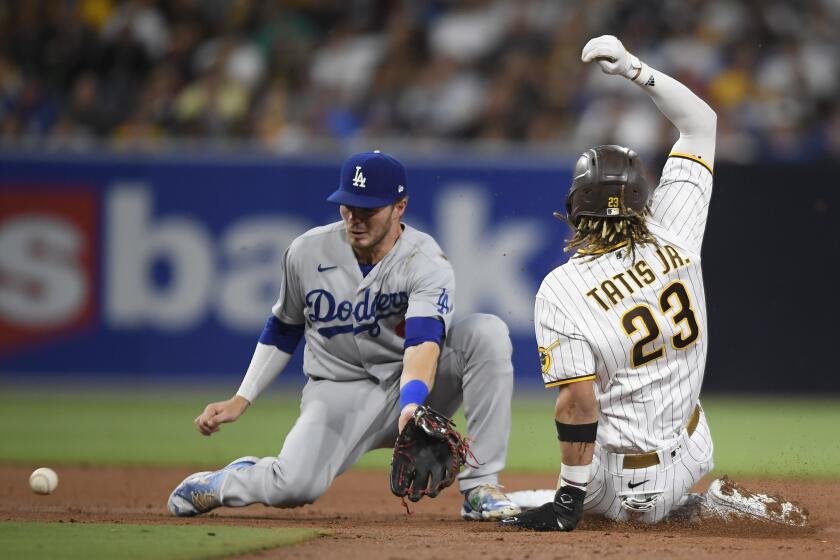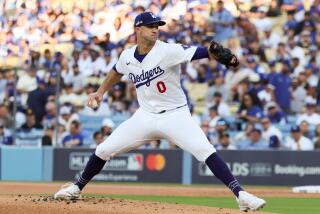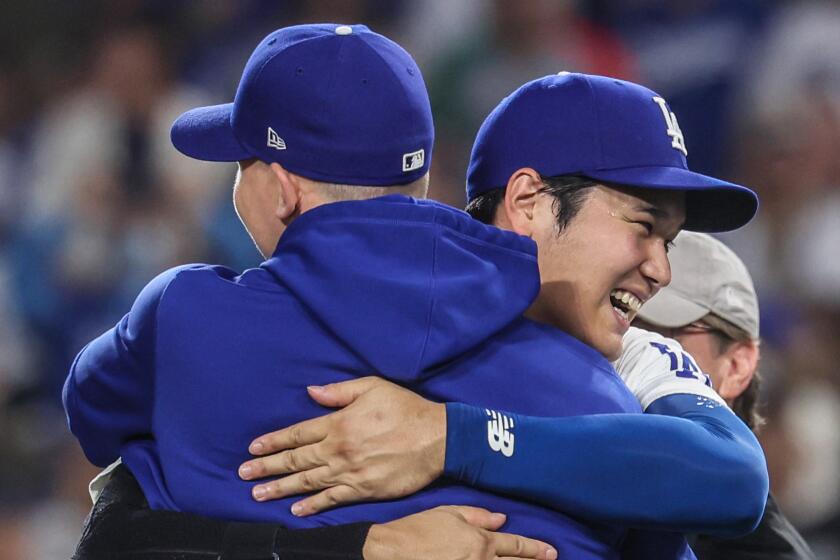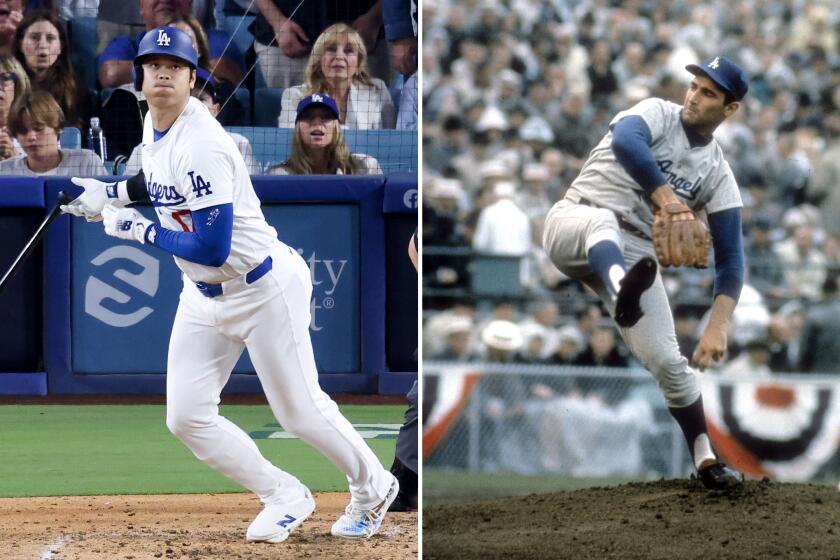Dodgers rookie Alex Vesia looking forward to personal homestand vs. Padres
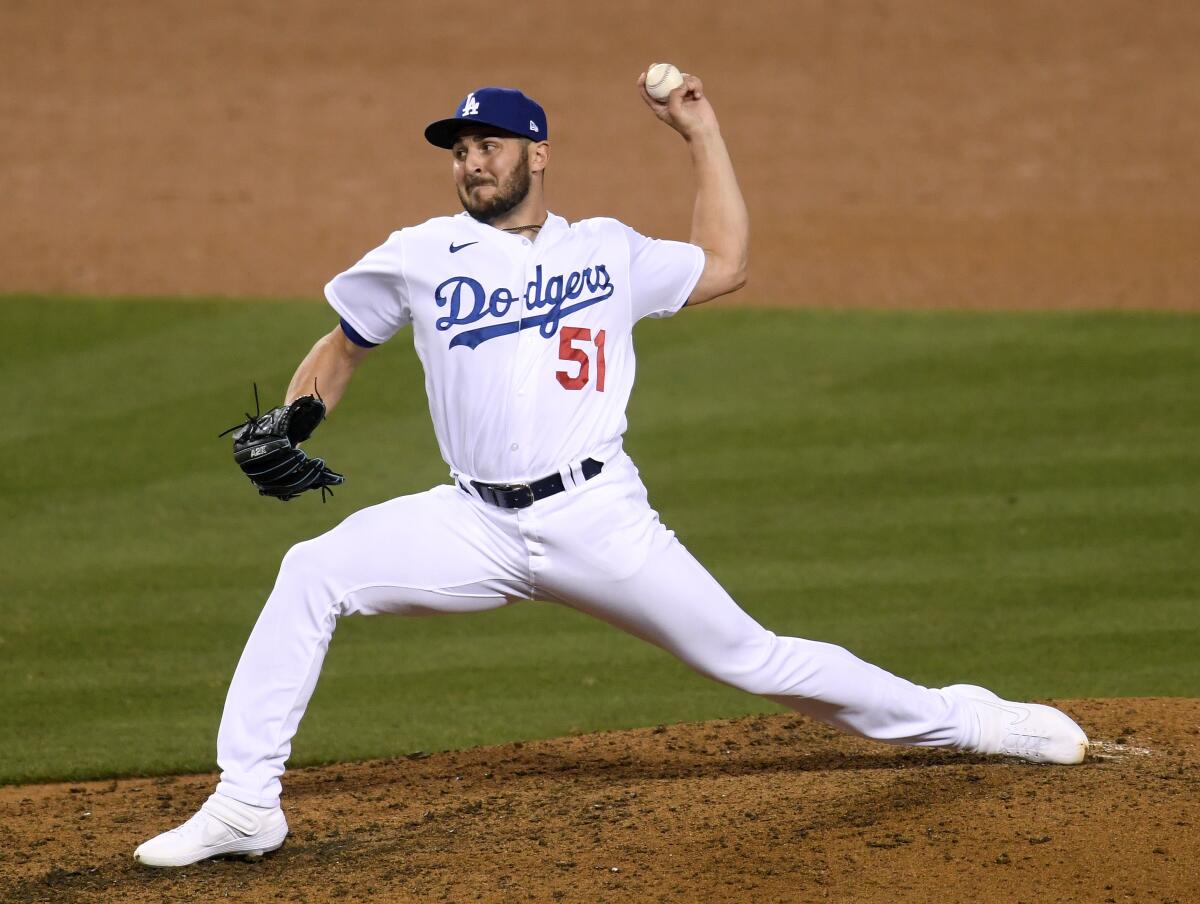
Alex Vesia enjoyed being outside, growing up in Alpine, a San Diego County town of some 15,000 residents tucked into the Cuyamaca Mountains.
He played Little League baseball, rode his bicycle and stayed busy in the family’s large backyard.
“When I wasn’t playing baseball,” he said, “I was usually out at the desert, riding a dirt bike or camping with my family.”
If a home repair was needed, neither Alex nor his sister, Serena, saw plumbers or electricians show up. Alex’s parents did the job themselves. Cindy is a composite tool maker for General Atomics. Bob owns a machine shop company.
“We don’t call anybody to fix problems around the house,” Alex said. “Either my mom or my dad will one-hundred percent fix it, without a doubt.”
When the Dodgers need a relief pitcher — and that could happen Tuesday night, when they will face the San Diego Padres to start a three-game series at Petco Park — the rookie Vesia is proving himself a reliable handyman.
Are you a true-blue fan?
Get our Dodgers Dugout newsletter for insights, news and much more.
You may occasionally receive promotional content from the Los Angeles Times.
A left-hander, he sports a 2.57 ERA in 28 innings with the defending World Series champions, who acquired him in a February trade with the Miami Marlins.
Vesia weighed 150 pounds as a slender senior for Steele Canyon High in Spring Valley. His fastball peaked at 84 mph.
Now it averages 93.6 mph, per FanGraphs.com.
In between, the 6-foot-1 pitcher grew much stronger while steadily adding weight in his four years at Cal State East Bay, the only college to offer him a scholarship.
The delivery he showed for Steele Canyon is still basically the same, he said — but Vesia, listed now at 209 pounds, said the muscle he gained in college has served him well.
“I’ve been throwing strikes,” said Vesia, who stays in touch with many former Steele Canyon teammates. “That’s the first key. Throwing strikes and keeping the hitters off balance. Mixing in a changeup or slider. But my fastball also has good velocity and good characteristics. I’ve been learning a lot from my catchers, which is nice. They’ve been calling absolutely great games. I trust them.”
It appears the Dodgers either invested in or believed they could enhance Vesia’s “spin efficiency” when they traded a big leaguer, reliever Dylan Floro, to get Vesia and another minor league pitcher four months after winning the 2020 World Series. Both pitchers came from the Marlins, who took Vesia in the 17th round of the 2018 draft and gave him 4 1/3 big league innings (seven walks, three home runs, nine earned runs) last year.
Spin efficiency describes how well spin translates to movement. The more efficient the spin, the more the ball moves. Some pitchers have a high spin rate but low efficiency.
Vesia throws fastballs that seem to jump over hitters’ bats.
Right-handers are hitting .085 off him; left-handers are batting .116. Hitters are 0 for 10 against the rookie in “high leverage” at-bats, per Baseball-Reference.com.
The Dodgers and the Vesia family can send a thank-you note to a Steele Canyon guidance counselor who convinced Alex he had a realistic shot at attending a four-year college.
Alex, who said the counselor probably would prefer to remain anonymous, said he thrived at the Hayward school.
“It was definitely the best decision I have made,” Vesia said. “I absolutely loved it there.”
They might be trending in opposite directions — L.A. up, San Diego down — but the Padres have won seven of 10 games against the Dodgers this season.
Four years of strength training and collegiate pitching paid off, as did intensive academic work online that, coupled with his job at a fitness club, culminated in Vesia earning a degree in recreational management.
He’s even more outspoken in his affection for Alpine, saying: “We love Alpine — Alpine’s the best.”
When he returns to his hometown, he quickly finds a local restaurant, Tapatio’s Mexican Grill, whose California burritos he touts to friends and Dodgers teammates.
He enjoys the town’s offbeat vibe, noting that when he was a boy, Little League teams in Alpine bore college names.
“We were the TCU Horned Frogs one year,” Vesia said. The left-hander added: “Alpine is always thinking outside the box, for sure.”
When the self-described small-town kid is pitching in Los Angeles, the small town comes to him.
Bob, Cindy and Serena have become regulars at Dodger Stadium, attending most games between Thursdays and Sundays despite not knowing whether Alex will pitch. Vesia makes sure to spot his parents and sister in the stands, usually near a railing two decks up from the field.
“I can’t express what it’s like, looking up in the stands and seeing them — it means a lot to me because they’ve been behind me forever,” he said. “They’ve always told me to go chase your goals and don’t let anything stop you. And now, we’re here.”
The Dodgers appear headed to the postseason, where they will try to become the first National League team to repeat as champion since the 1976 Reds.
There’s precedent for an East County-rooted left-handed reliever abetting the Dodgers’ World Series success: Terry Forster, from Santana High in Santee, pitched for the 1981 World Series winners seven years after leading the American League in saves with Chicago.
As a boy, Vesia picked top-notch big leaguers to follow, starting with Derek Jeter.
He’s not about to stop aiming high. “I like where I’m at, and I like where I’m headed,” he said. “It’ll be a lot of fun the next two months.”
More to Read
Are you a true-blue fan?
Get our Dodgers Dugout newsletter for insights, news and much more.
You may occasionally receive promotional content from the Los Angeles Times.
